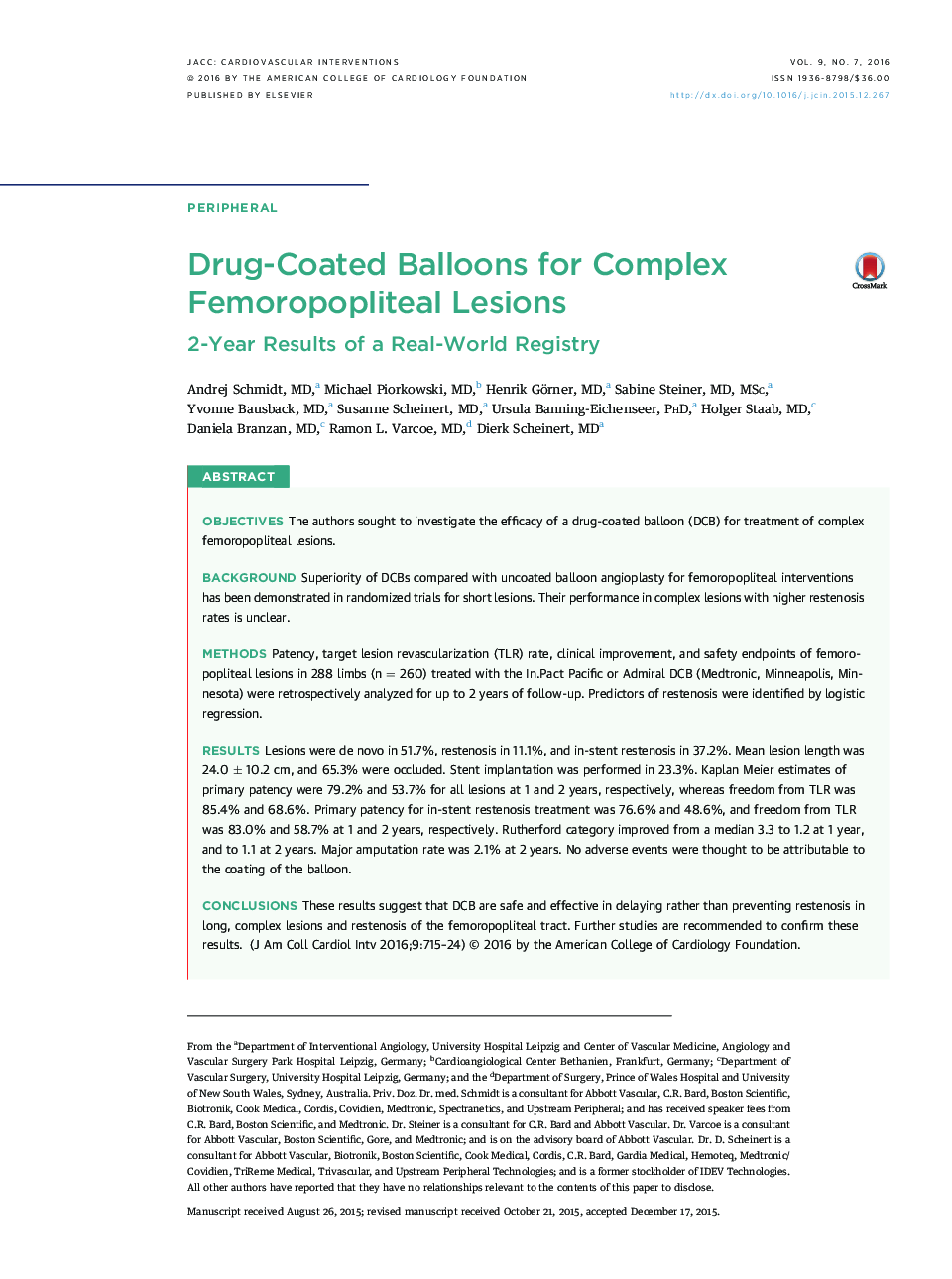| Article ID | Journal | Published Year | Pages | File Type |
|---|---|---|---|---|
| 2939665 | JACC: Cardiovascular Interventions | 2016 | 10 Pages |
ObjectivesThe authors sought to investigate the efficacy of a drug-coated balloon (DCB) for treatment of complex femoropopliteal lesions.BackgroundSuperiority of DCBs compared with uncoated balloon angioplasty for femoropopliteal interventions has been demonstrated in randomized trials for short lesions. Their performance in complex lesions with higher restenosis rates is unclear.MethodsPatency, target lesion revascularization (TLR) rate, clinical improvement, and safety endpoints of femoropopliteal lesions in 288 limbs (n = 260) treated with the In.Pact Pacific or Admiral DCB (Medtronic, Minneapolis, Minnesota) were retrospectively analyzed for up to 2 years of follow-up. Predictors of restenosis were identified by logistic regression.ResultsLesions were de novo in 51.7%, restenosis in 11.1%, and in-stent restenosis in 37.2%. Mean lesion length was 24.0 ± 10.2 cm, and 65.3% were occluded. Stent implantation was performed in 23.3%. Kaplan Meier estimates of primary patency were 79.2% and 53.7% for all lesions at 1 and 2 years, respectively, whereas freedom from TLR was 85.4% and 68.6%. Primary patency for in-stent restenosis treatment was 76.6% and 48.6%, and freedom from TLR was 83.0% and 58.7% at 1 and 2 years, respectively. Rutherford category improved from a median 3.3 to 1.2 at 1 year, and to 1.1 at 2 years. Major amputation rate was 2.1% at 2 years. No adverse events were thought to be attributable to the coating of the balloon.ConclusionsThese results suggest that DCB are safe and effective in delaying rather than preventing restenosis in long, complex lesions and restenosis of the femoropopliteal tract. Further studies are recommended to confirm these results.
